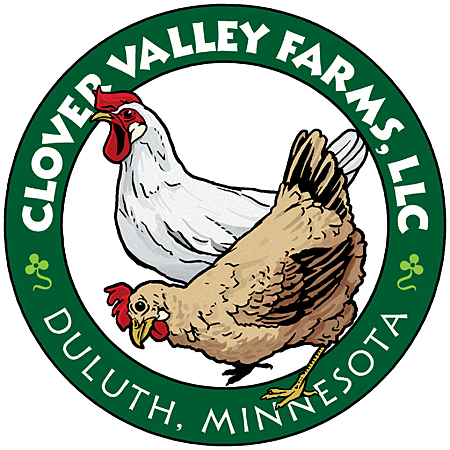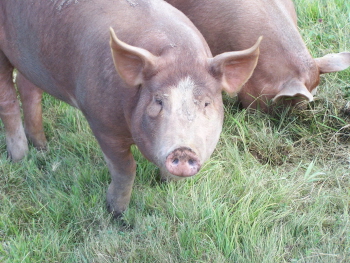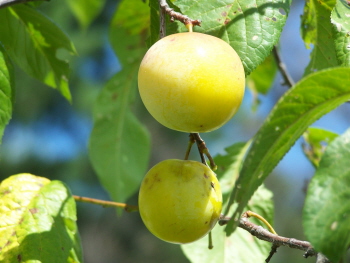Composting Toilets
When Cindy purchased the property, there was a well but no septic system. The clay soil of the site would have required a mound septic system, at a cost of approximately $12,000-$15,000 in 1998. Cindy wanted a greenhouse anyway and knew that one could potentially be combined with a greywater system at a similar cost to a mound septic system.
The composting toilets now in use at Clover Valley Farms – one in the house and one outside – are one example of the ways in which Cindy and Jeff’s lifestyle is intertwined with their farming business. Some of the breakdown process occurs within the holding tanks of the toilets. Every few weeks, the material is then moved to secondary holding bins placed around the farm. These bins are covered with a loose-fitting cover and are stirred regularly to aerate the material and cause it to heat up, but Jeff and Cindy do not monitor temperatures of the material in these bins. The organic material remains in these bins for a year. Then it is spread on fields, away from the animal production areas. With this approach, Cindy and Jeff reduce household water use while generating a useful fertilizer for their farm.
Educator's Perspective: Resource Tip Proper treatment of human wastes is one of the great public health triumphs of the world. Public sewage systems in cities and individual septic systems in rural areas have allowed diseases like typhus and cholera and parasites like tapeworms and ascarids (roundworms) nearly to fade from living memory in the developed world. University of Minnesota Extension’s Septic System Owner’s Guide provides a good overview of septic system features, requirements, operation, and maintenance. It includes discussion of alternative systems. (Only a portion of the document is available online, but the online version has ordering information for the complete print publication.) Composting toilets and greywater systems are becoming popular alternatives to conventional septic systems, but they require a thorough understanding of sewage treatment principles and regulations. Most counties in Minnesota have a Subsurface Sewage Treatment System (SSTS) Ordinance (counties listed here). Each county develops its own ordinance (see example from Dodge County, MN), but they follow the same general template in order to comply with Minnesota Statutes. SSTS ordinances require that raw sewage from dwellings not served by a municipal sewer system be treated in an underground septic system. Typically, if a home has running water it is also required to have an SSTS. The county’s Environmental Services department or Planning and Zoning department issues permits for these systems according to county standards. Landowners living in counties with an SSTS ordinance most likely need special permitting to use a composting toilet system. “Greywater” is water from sinks, bathtubs and showers, and laundry – basically anything other than toilets. Water from toilets is termed “blackwater.” From the perspective of officials charged with protecting public health, however, there is very little difference between “greywater” and “blackwater,” because in a household situation human bodily wastes can readily enter the greywater stream. Urinating in the shower, using cloth diapers for an infant and washing them in the washing machine, washing soiled hands after using the toilet or changing a diaper, or washing soiled clothing from someone who has had diarrhea – all of these things put “blackwater” into the “greywater” stream. For this reason, SSTS ordinances generally require nearly as elaborate a treatment regime for greywater as they do for blackwater, and county authorities may be reluctant to permit greywater systems. Alternative waste treatment systems such as composting toilets require a higher level of daily management and responsibility on the part of the owner. Those who use them should understand the principles of waste treatment and the risks of pathogens from improperly treated human wastes. Composting of human solid wastes is one acceptable method of pathogen reduction, but the processes required to achieve true composting are exacting. This Pathogen Reduction Requirements document from North Carolina describes the federal standards used to achieve a “Class A” pathogen-free material from human waste: “Using either the within-vessel, static aerated pile, or windrow composting methods, the temperature of the biological residuals is raised to 40 degrees Celsius or higher and remains at 40 degrees Celsius or higher for five days. For four hours during the five days, the temperature in the compost pile exceeds 55 degrees Celsius. Natural decay of the biological residuals under uncontrolled conditions is not sufficient to meet this process." Treatment of wastes with lime to reach a pH level of 12, and holding that pH level for 12 hours, is another option, and one that may be easier for homeowners to achieve. The options for treatment of human wastes that will be applied on land and the time delays required between application and other uses of the land are detailed in the U.S. Environmental Protection Agency (EPA), Code of Federal Regulations, Title 40 CFR part 503.32. A related EPA document includes definitions of terms used in the regulations and classifies types of crops into food-chain or non-food-chain crops. |
 |
 |


